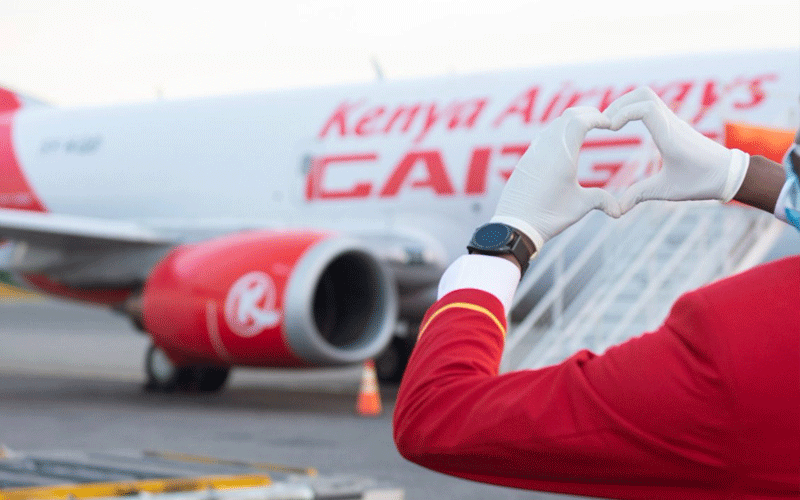Kenya Airways set to jettison Sh40b profit on back of pandemic

AVIATION: Kenya Airways has projected a $400 million (Sh40 billion) loss in revenue this year, arising from Covid-19 concerns.
The airline’s chief executive Allan Kilavuka said the forecast is based on the fact that KQ’s passengers carrying capacity will decline to 65 per cent post Covid-19.
“We will not operate at capacity, since the numbers will drop by 65 per cent,” said Kilavuka.
According to the International Air Transport Association (IATA), the pandemic will result in 2.5 million lower passengers in Kenya, with revenue losses risking 137,965 jobs and costing the economy Sh110 billion.
Kilavuka, who was virtually addressing investors and the media when the airline released its 2019 full year financial results said “upto May, we have lost $150 million (Sh15 billion) in revenue.”
He said the airline resumes flying next month, though this will depended on the IATA directive and lifting of the lockdown in Kenya.
To that effect, he said, they will be engaged in building confidence, reviewing the network to fly effectively on all routes and go digital to conform to the new norm which involves “less touching”, as well as focus more on cargo lifting.
“We shall start with domestic and regional flights, then include one or two international routes and increase as demand rises,” he said.
Kilavuka said KQ would not invest in new route expansion, but rather rationalise existing ones with emphasis on those that build quick traffic and have a positive contribution on the entire airlines’ network.
Re-purposed planes
In the wake of the pandemic which forced the airline to ground its passenger planes, KQ re-purposed three Boeing 787s for cargo, airlifting 1,600 tonnes of flowers to Europe, 1,500 tonnes of medical equipment across Africa and 2,600 tonnes of foodstuffs to Europe, Asia and the Middle East.
In the financial period ending December 31, 2019, KQ flew into a further financial storm, posting a Sh13 billion net loss on the back of increased operating costs and the adoption of the new IFRS 16 financial accounting standards.













